As we celebrate the anniversary of benzene’s isolation, we must remember that scientific centenaries carry additional agendas
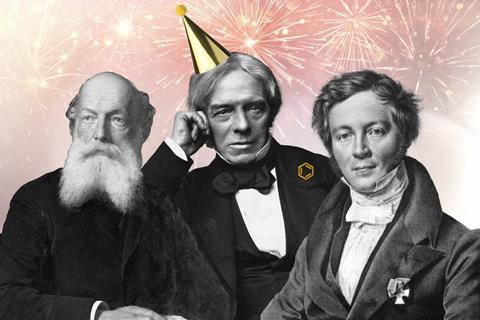
For many chemistry students, benzene is the Proustian madeleine. Nothing conjures up those hours in the organic chemistry lab trying desperately to crystallise your products more vividly than the almond whiff of benzene derivatives. However abstract the concept of aromaticity has become in chemistry today, it’s clear enough where it began: in the heady scent of the kernel at the heart of the compounds first considered aromatic, the benzene ring.
It is 200 years since benzene was first identified by Michael Faraday as a component of oil.1 That hexagonal ring structure, deduced four decades later, is now one of chemistry’s icons – perhaps the only molecular structure with brand recognition that rivals DNA’s double helix.
But as with DNA, benzene’s familiar shape has gathered a mixed legacy. Just as the double helix signifies both life and the manipulations of it in modern genetics, so benzene has been a poster child for both the bounty of the chemical industry and the toxic, carcinogenic and polluting nature of some of its products. Benzene transformed chemistry, and the consequences are complicated.
Bi-carburet beginnings
Although Faraday discovered it, he didn’t name it. To him it was the ‘bi-carburet of hydrogen’: a compound of carbon and hydrogen. His discovery paper, read to the Royal Society on 16 June 1825, is a reminder of his clear and sometimes delightfully congenial way of writing. Having become interested in the compounds in oil five years earlier, he says that ‘since then I have endeavoured to lay hold of every opportunity for obtaining information on the subject.’ Such an opportunity was presented when one Mr Gordon gave him a fluid (‘oil gas’) produced by compression of the volatile components of oil by the Portable Gas Company, one of the businesses nurtured by the birth of gas lighting.
Faraday fractionally distilled this substance and found that some distillates could be crystallised on cooling. One of these, he said, was a colourless transparent liquid smelling both of the original oil gas and of almonds. It was slightly soluble in water, and very soluble in ether and alcohol.
It wasn’t until 1845 that benzene was discovered in coal tar itself
Faraday’s analysis revealed it to be a compound of carbon and hydrogen in the ratio 2:1 (hence ‘bi-carburet’) – for he was using the old atomic weights of John Dalton, whereas later revisions adjusted the ratio to 1:1. (Faraday mentions that both Dalton and William Henry had probably unwittingly produced the new compound from oil gas previously.)
When the centenary of Faraday’s discovery was celebrated in 1925 at the Royal Institution,2 much emphasis was afforded to its alleged link to the coal-tar dyes initiated with William Perkin’s mauveine (aniline purple) in 1856, which were still burgeoning in the early 20th century. That, however, was a bit of a fix, for it wasn’t until 1845 that benzene was discovered in coal tar itself – the black and unappealing residue from gas extraction from crude oil – by Charles Mansfield, working under the German chemist Wilhelm Hofmann.
And it wasn’t until 1833 that this 1:1 aromatic compound of carbon and hydrogen became known as benzene. The name (initially benzin) was proposed by the German chemist Eilhard Mitscherlich, who distilled it from benzoic acid extracted from the aromatic resin gum benzoin – that name in turn being rooted in Arabic alchemy. Mansfield began to produce benzene by distillation of coal tar on an industrial scale in 1849; it was soon in demand as a solvent, in particular for the newly invented dry-cleaning process.
Purple patch
It was an aromatic benzene derivative, aniline, that Hofmann’s young student Perkin used in 1856 to try to synthesise quinine, and which left him with the wonderful purple dye. To set up industrial production, Perkin needed to synthesise aniline from benzene by nitration followed by reduction – such a two-step reaction was unprecedented on an industrial scale at the time.
All this meant that arguably Mansfield’s isolation of benzene was more important to the chemical industry than was Faraday’s. Either way, the British chemist Henry Roscoe averred in 1884 that benzene (which many then called benzole) ‘has become of greatest importance to us in the production of the splendid colours which are known as the beautiful aniline dyes.’
That was the message of the celebration organised in 1890 by the German Chemical Society in Berlin, dubbed the Benzolfest, which was attended by Hofmann and other leading chemists as well as Kaiser Wilhelm II. The attendees were shown an image of the ‘benzene tree’, in which coal and coal tar at the root and trunk produced branches adorned with a riot of colours: aniline purple and blue, magenta, naphthol yellow and black, alizarine orange and cyanine.
The tree rose ‘into the clouds to where the eye cannot yet follow it,’ Hofmann said. He claimed, rather hyperbolically (and to some degree self-servingly), that, thanks to the benzene ring, ‘the number of organic compounds all at once increased to infinity’ – and in the chemical industry, especially in Germany, ‘no dearth of industrious workers’ were ‘busily striving to collect the harvest.’ That harvest soon broadened to drugs and foodstuffs, like the saccharin and caffeine sold to the Coca Cola Company by an American coal-tar company set up in 1901 by the businessman John Francis Queeny, called Monsanto Chemical.
Centenary celebrations
There’s a lesson in all this about scientific centenaries that we might do well to consider. They tend to be not just, or even primarily, celebrations of discovery, but have a pedagogical or economic agenda. In 1906 the Royal Institution hosted an event to commemorate the half-century since Perkin’s discovery that was at least in part an advertising opportunity for the dye industry, with nationalistic overtones.
In his opening address the chemist Raphael Meldola , sporting a mauve tie, commented on the aptness of the venue ‘in which Michael Faraday discovered the hydrocarbon benzene as we now call it’. German chemist Carl Duisberg, a board member of Bayer, crowed back that ‘Germany has the natural privilege in the organic chemical industry and other nations should not envy her in this, but leave it to her’.
That solecism did not, however, explain why there were no German delegates at the Royal Institution centenary of Faraday’s work 19 years later. Rather, Germany was then being treated as an international pariah after World War I. The event, at which Faraday’s original specimen of benzene was displayed, was convened by chemist Henry Armstrong, an emeritus at Imperial College, and it asserted a link between Faraday and the chemical industry with a banner in which the benzene ring, with an ‘F’ at its centre, was surrounded by the rainbow of coal-tar and related hues.
In his opening address, the Royal Institution’s president Alan Ian Percy, Duke of Northumberland, lamented how British chemists had seen these chemical technologies ‘pass into foreign hands, and others secure the birth-right which belonged to us’. At the reception banquet Armstrong even alluded back to Duisberg’s comment from 1906 and said ‘Today I have my revenge.’
Structural transformation
It was that iconic six-membered ring which had prompted the 1890 Benzolfest, which marked the 25th anniversary of Friedrich August von Kekulé’s announcement of the molecular structure. Kekulé’s work had a deeper significance to organic chemistry than merely figuring out how the carbon atoms in benzene were satisfied with so few hydrogens (important though this was). He shifted the emphasis of the field from classification – as exemplified by Jöns Jacob Berzelius’s notion of compound types united by shared ‘residues’ or radicals – to structure.
Building (without due acknowledgement) on the ideas of English chemist Edward Frankland, Kekulé secured the concept of valency and developed the idea of the carbon chain. (Allegedly this idea arrived during a reverie on a London bus, but that might merely have been the first of Kekulé’s self-mythologising stories.)
‘Three-fourths of modern organic chemistry is directly or indirectly, the product of this theory’
Francis Japp
When Kekulé first presented his solution to the benzene riddle – a chain with the ends joined – in an 1865 paper ‘On the constitution of aromatic substances’, it looked more like a string of sausages. It was his students who, the following year, first presented the structure as a hexagon, and the German chemist Adolph Claus depicted the geometric stick form in the same year. Hofmann made that representation popular, and in 1872 Kekulé pointed out that there were two possible arrangements of the alternating single and double bonds: two equivalent isomers, which he supposed interconverted in a dynamical equilibrium.
It later became clear that there is only one type of carbon–carbon bond in the molecule, which Linus Pauling, drawing inspiration from Werner Heisenberg’s quantum mechanics (devised in the year of the Faraday centenary), explained in terms of a resonance between coexisting structures.
Claus, incidentally, was a former student of the German chemist Hermann Kolbe, who never accepted Kekulé’s structure and clung to the old hierarchical radical picture; he despised Kekulé personally. Most others, however, recognised the transformational nature of the new structural theory.
In 1898 the British chemist Francis Japp, delivering the Kekulé Memorial Lecture in London, said of the ‘benzene theory’ that ‘three-fourths of modern organic chemistry is directly or indirectly, the product of this theory’. It was arguably a fair judgement. As the late historian of chemistry Bill Brock has put it: ‘The future of chemistry, as well as industry, after 1865 was … to lie in structural chemistry at the sign of this hexagon.’3
References
1 M Faraday, Phil. Trans. R. Soc., 1825, 115, 440 (DOI: 10.1098/rstl.1825.0022)
2 J Wilson, Ambix, 2012, 59, 241 (DOI: 10.1179/174582312X13457672281821)
3 W H Brock, The Fontana History of Chemistry. Fontana, London, 1992, p269


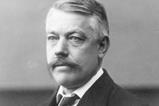



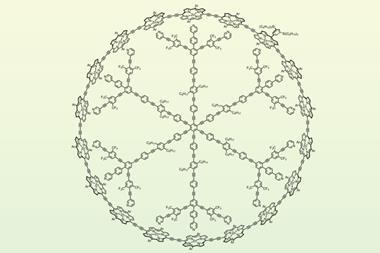
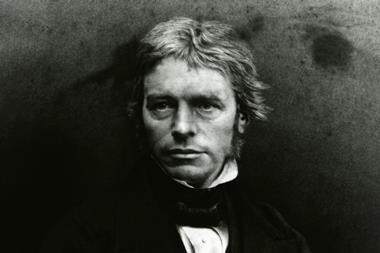

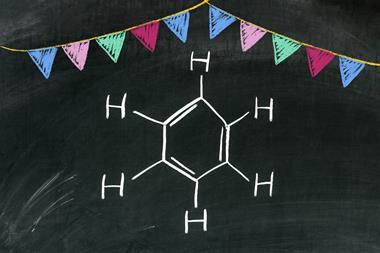

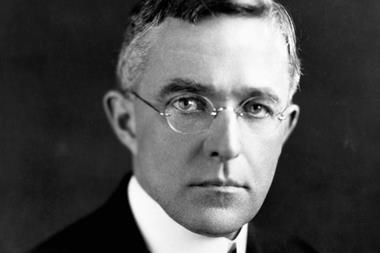

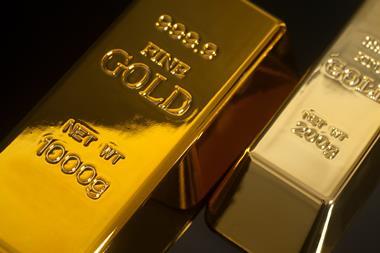
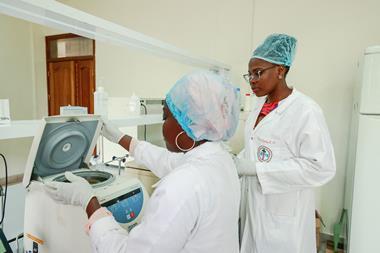


No comments yet